30 For 30: Big Shot
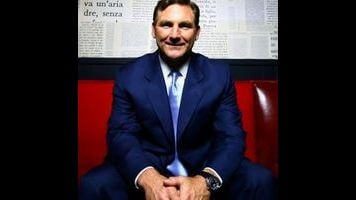
This Is What They Want
This Is What They Want follows an ideal structure for a 30 For 30 entry. It doesn’t try to bite off more than it can chew by covering Jimmy Connor’s entire career in detail, or by placing him in the larger context of tennis history, or by bemoaning the lack of comparable American male tennis stars in the modern game. The film rightly focuses on the best story in Connor’s career: his run to the semifinals in men’s singles at the 1991 U.S. Open. But it sprinkles in smart bits of context throughout, jumping back to fill in history Connors had with opponents, with rivals, or with antics on the court. And most subtly, it critiques the racist and classist history of the sport without devolving into an issues documentary at the expense of a compelling story. One commentator mentions after Connors’ third round victory that tennis was “a sport that existed in a cultural milieu that was despicable and hard to defend”—that even the slightest step outside strict decorum would incite outrage. Jimmy Connors was one of the loudest, most rebellious voices against that bullshit. Love the competitive streak, or hate the insolence—his inability to conform was electrifying to watch, like Mario Balotelli is in soccer today.
The opening minutes set the stage for Connors as the antithesis of the tennis establishment. In contrast to a genteel, elite, country club sport, Jimmy Connors was a blue collar St. Louis kid whose mother taught her son to play (and didn’t lose to him until he was 16). That kid emerged on the professional circuit treating tennis like “boxing from 90 feet away,” a one-on-one showdown that not only involved your physical skill, but mental toughness and the ability to mess with an opponent or appeal to the crowd for support. It’s a decidedly unorthodox way of looking at the game, and certainly the traditionalists wouldn’t like the comparisons between something so brutal with a “nice” game like tennis. But Connors played with wild passion, and perhaps the reasons anyone watching today remembers John McEnroe more readily is for two reasons: McEnroe was a better tennis player, and he marketed that temper better than Connors wanted to. (David Foster Wallace wrote: “For me, watching McEnroe don a blue polyester blazer and do stiff altruistic color commentary is like watching Faulkner do a Gap ad.”)
That contrast with McEnroe makes the first match of Connors’ 1991 run thrilling, since his opponent for the longest match of the tournament was John’s younger brother Patrick. The match lasted until 1:30 in the morning, and hinged on a few key points just as McEnroe really had Connors beat. But that’s the key detail throughout the documentary: Connors got to a point where his back was against the wall, and his fierce competitiveness mentally shook his opponents. He could make people blink, either with his showmanship or downright buffoonery—yelling at linesmen, taking too long to stall every point and every game. Connors is an asshole. He at one point literally recites the reality-star mantra, that he was “not out there to make friends,”—but at least he’s transparent enough to admit it, and to have the conviction to exude that extreme competitive streak even when being interviewed for this film.
But the centerpiece always will be Connors’ fourth-round match against his friend and protégé Aaron Krickstein, a simply revelatory sequence where commentators, former players, and the players pick apart every detail of the match. The crowd is absolutely thrilling to hear even over two decades later. Krickstein still looks like a deer in the headlights recalling the match, going over the mind games Connors worked on him, the obscene outburst to the judge, bringing the crowd into it. We know Connors wins, but seeing him exact a comeback victory—and take a part of Krickstein in the process—is excruciating. The two most incredible revelations in the aftermath of that: Mike Lupica’s wife saying that every spectator left that stadium believing they helped Connors win. That right there is live sports in a nutshell. That’s the collective influential experience that fans want when they attend sporting events, to feel a part of something they don’t have much of an effect on. Secondly, the final revelation that Krickstein and Connors never really talked about the match, and it’s still a broken friendship, simply because of how devastating it was to Krickstein’s career. His coach dropped him soon after, and picked up with a little-known player named Pete Sampras.
This Is What They Want has a bunch of other engaging moments littered throughout Connors’ improbably run. Chuck Klosterman stands in admirably as the talking head that surely would have gone to David Foster Wallace had tragedy been avoided. His description of rooting against Connors expresses precisely why I do not understand hating gifted players who simply outwork their opponents. Connors was a relentless workhorse like Pete Rose, and there’s “no social downside to being so maniacally competitive.” That attitude makes the person who dislikes them the villain, it’s their problem to deal with that competitive nature that sports demands. And it’s hard to argue that the portrait outlined by the story of Connors’ 1991 run is an entirely repulsive one. He was a uniquely gifted player who got to have his run at being The Natural, one final hurrah before marching off into the sunset. Very few athletes ever get to go out on top. The only one I liked who ever did that was John Elway, who didn’t switch teams like Joe Montana or Jerry Rice, or make a string of ill-advised comebacks like Michael Jordan. Connors continued competition puts him in the latter category, but his run at the 1991 U.S. Open remains an impressive individual triumph of sheer will.
Bernie And Ernie
Not many close friends end up playing the same sport, on the same level, for a sustained period of time necessary to achieve professional success. That distinction makes the story of two New York transplants at the University Of Tennessee, Bernard King and Ernie Grunfeld, so special and inspiring. Bernie And Ernie is thankfully the second 30 For 30 entry in a row to pare down the focus of a documentary to the right amount of material to cover in an hour. There’s a clear line—from very different childhoods, to meeting at UT, to paths diverging in the NBA, to reconnecting on the Knicks—and that’s the thread the documentary follows, alternating focus between the two players as their careers shine.
King grew up in Fort Greene, Brooklyn, with strictly religious parents. His mother beat him when he refused to attend church in favor of basketball. He is a stoic, quiet man with a host of terrible memories. But get him talking about basketball, and he breathes easily. He repeats a quote about the feeling of making his first basket multiple times, a mantra for sports as escapism. It took him from the projects to the NBA, and it’s how he ended up knowing a guy like Ernie Grunfeld.

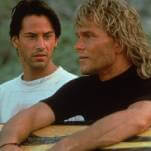





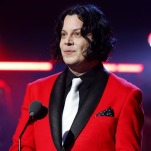

![Rob Reiner's son booked for murder amid homicide investigation [Updated]](https://img.pastemagazine.com/wp-content/avuploads/2025/12/15131025/MixCollage-15-Dec-2025-01-10-PM-9121.jpg)



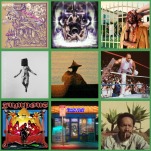


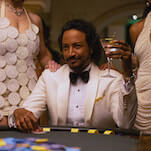

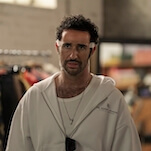




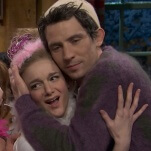

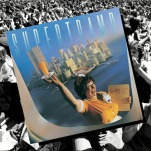







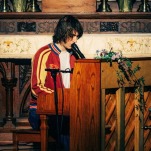

![HBO teases new Euphoria, Larry David, and much more in 2026 sizzle reel [Updated]](https://img.pastemagazine.com/wp-content/avuploads/2025/12/12100344/MixCollage-12-Dec-2025-09-56-AM-9137.jpg)




